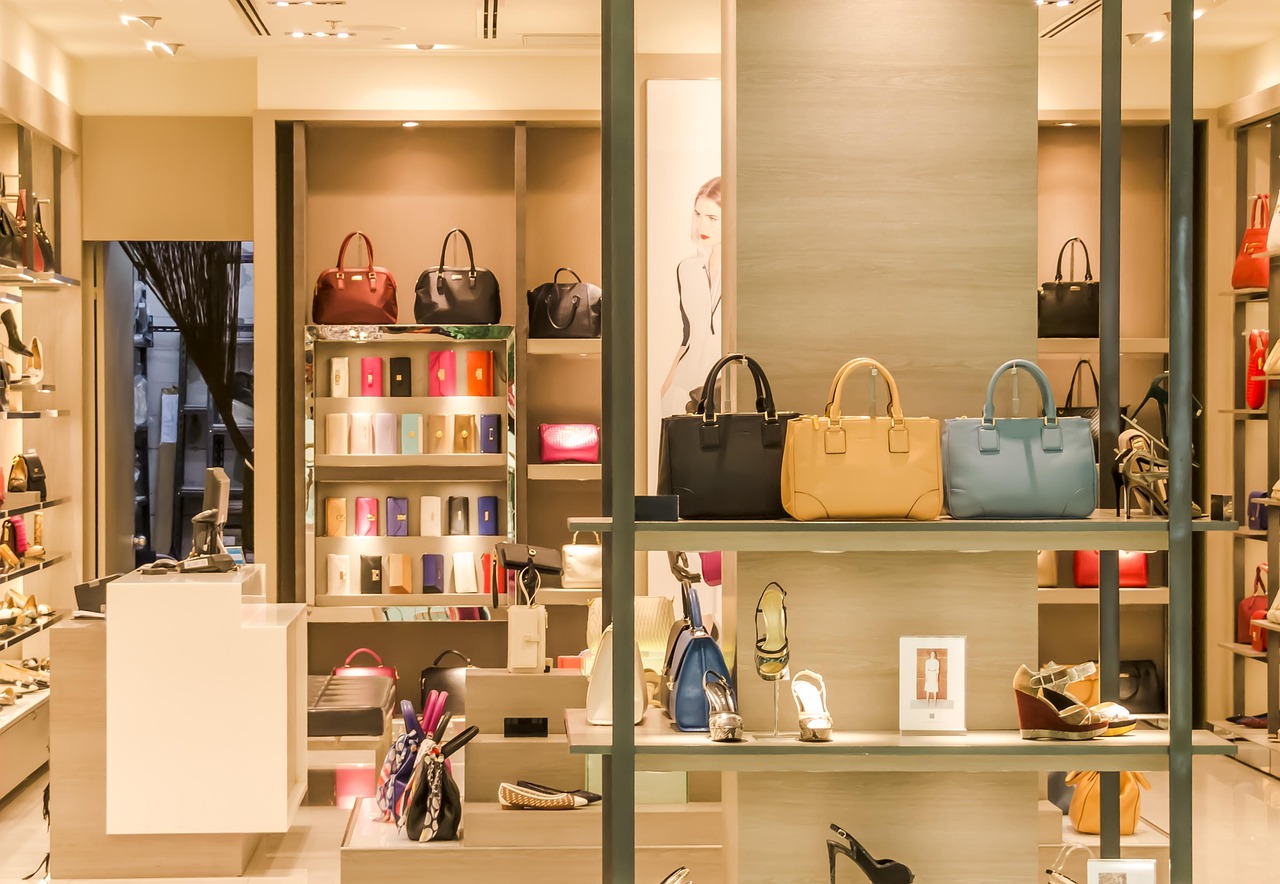Text in English below
Paris, Mitte der 1970er.
Während in den Cafés über Sartre diskutiert wird und in den Vorstädten die Arbeiter:innen zur Frühschicht aufbrechen, sitzt ein Soziologe an einem Buch, das später zu einem Klassiker wird: La Distinction – auf Deutsch: Die feinen Unterschiede.

Pierre Bourdieu interessiert sich für eine scheinbar harmlose Frage:
Was sagen unsere Vorlieben – für Musik, Kunst, Essen, Einrichtung – wirklich über uns aus?
Er lässt Tausende Menschen befragen: Welche Musik sie hören, welche Möbel sie besitzen, welche Filme sie sehen, welchen Sport sie treiben. Aus diesen Antworten zeichnet er das Bild einer Gesellschaft, in der Geschmack kein privates Detail ist, sondern ein präziser Indikator für Klasse und Macht.
Und genau dieses Denken trifft unsere Gegenwart – trotz TikTok, Spotify und Instagram – erstaunlich hart.
Bourdieu in Kurzform: Geschmack als soziale Grammatik

Bourdieu beobachtet ein Frankreich im Aufbruch: mehr Bildung, mehr Konsum, mehr scheinbare Durchlässigkeit. Aber unter der Oberfläche sieht er etwas anderes: eine Gesellschaft, in der sich Klassen nicht nur über Einkommen und Beruf unterscheiden, sondern über Stil, Sprache, Körperhaltung und Kulturkonsum.
Dafür entwickelt er drei zentrale Begriffe:
- Kapital:
Nicht nur Geld, sondern auch- kulturelles Kapital (Bildung, Sprachstil, kulturelles Wissen),
- soziales Kapital (Beziehungen, Netzwerke),
- symbolisches Kapital (Anerkennung, Prestige).
- Habitus:
Das verinnerlichte „Programm“, das entscheidet,
wie wir sprechen, wie wir sitzen, was wir peinlich finden,
welche Musik wir „ernst nehmen“ und welche wir lächerlich finden. - Distinktion:
Die Kunst, sich über Geschmack von anderen abzugrenzen.
Nicht mit der Faust, sondern mit dem Satz:
„So etwas höre/trage/esse ich nicht.“
Bourdieus Befund:
Die oberen Klassen definieren, was als „guter Geschmack“ gilt.
Ihre Vorlieben werden zur Norm – und alle anderen müssen sich dazu verhalten.
Sprung in die Gegenwart: neue Oberfläche, alte Logik
Springen wir fast fünfzig Jahre weiter.
Die Cafés sind noch da, aber jetzt werden dort Flat Whites fotografiert.
Die Konzerthäuser sind noch da, aber die wichtigsten Bühnen liegen in Apps.
Und unsere feinen Unterschiede haben 4K-Smartphone-Qualität bekommen.
Auf den ersten Blick wirkt alles individueller:
Jede:r stellt sich die eigene Playlist zusammen, kuratiert den eigenen Feed, baut die eigene „Personal Brand“.
Doch je genauer man hinschaut, desto klarer wird:
Die Muster, die Bourdieu in Paris beschrieben hat, leben weiter. Sie haben nur neue Formen angenommen.
Mode: Quiet Luxury als neue Klassensprache
Früher war Status laut:
große Logos, Monogramme, sichtbare Marken. Man zeigte, was man hatte.
Heute ist der Ton leiser, aber nicht weniger eindeutig:
- Kaschmir ohne sichtbares Label
- Taschen, die nur Eingeweihte erkennen
- schlichte Sneaker, die vierstellige Preise haben
Quiet Luxury funktioniert wie ein Geheimalphabet:
Wer Bescheid weiß, liest mit. Wer nicht, sieht „einfach einen Mantel“.
Diese Verschiebung vom lauten zum leisen Luxus wirkt nach außen demokratisiert – keine Logos, mehr Minimalismus. In Wirklichkeit ist es eine Verfeinerung der Distinktion:
- Statt „ich kann mir Marke X leisten“ heißt es heute:
„Ich bewege mich in einem Umfeld, in dem diese Qualität selbstverständlich ist – und ich muss darüber nicht sprechen.“
Selbst Anti-Trend-Ästhetiken – Vintage, „Capsule Wardrobe“, Normcore – können zur Distinktionsstrategie werden:
Abgrenzung nicht mehr über das Teuerste, sondern über das „Bewussteste“.
Richtig interessant wird es, wenn man fragt: Wer kann sich leisten, Konsumstile überhaupt als Statement zu kuratieren – und wer nicht?
Musik: Spotify Wrapped als feines Klassendiagramm
Einmal im Jahr landet Spotify Wrapped in unseren Feeds.
Bunte Grafiken, Top-Künstler:innen, Lieblingsgenres.
Es wirkt wie ein lustiger Spiegel unserer Persönlichkeit.
Bourdieu würde vermutlich fragen:
Welche Milieus werden hier sichtbar?
- Die einen zeigen stolz ihre Klassik-, Jazz- oder Indie-Playlists,
dazu vielleicht ein paar „Nischenkünstler:innen“. - Andere hören Ballermann, Schlager, Charts, Deutschrap – posten es aber lieber nicht.
Denn wir wissen intuitiv:
Nicht alle Genres haben das gleiche symbolische Gewicht.
„Ich höre alles – außer Schlager“ ist in diesem Licht kein beiläufiger Satz, sondern eine Distanzmarkierung.
Es heißt:
Ich bin nicht „so wie die“, die das ernsthaft mögen.
Musik wird damit zur höflichen Form von Klassismus.
Wir sprechen über „Niveau“ und „Komplexität“ – und meinen oft: „Menschen wie wir“ und „Menschen wie die“.
Instagram-Stories: Geheimtipps, Klassik, Kuratierung
Instagram und TikTok sind die perfekten Bühnen für Distinktion 2.0.
- der kleine Naturweinladen ohne Schild
- das Restaurant „abseits der Touristenströme“
- das Foto in der Philharmonie, im Residenztheater, in der Galerie
- die Story aus dem „richtigen“ Viertel der „richtigen“ Stadt
All das sind nicht nur Eindrücke.
Es sind Signale:
Ich kenne Orte, die nicht im Reiseführer stehen.
Ich bewege mich selbstverständlich in bestimmten kulturellen Räumen.
Interessant ist weniger das einzelne Bild, sondern die Summe:
- Wer regelmäßig Klassik-Konzert, Ausstellungen, bestimmte Cafés und Buchhandlungen zeigt, baut ein klares kulturelles Profil auf.
- Wer Familienfeier, Großraumbüro, Kette und Discountmarkt zeigt – oder auch einfach nichts – erscheint schnell „weniger interessant“.
Die Timeline wird zur Landkarte des kulturellen Kapitals.
Nicht jede:r liest sie bewusst, aber viele fühlen, was „oben“ und was „unten“ ist.
Innenräume, Food, Reisen: Ästhetik als Weltanschauung
Der Bourdieu-Blick schärft sich, wenn man weiterzoomt:
- Wohnungen: helle Wohnungen mit Holzfußboden, Trockenblumen, Designer-Stuhl, Keramikgeschirr und einer sehr bestimmten Art von Minimalismus erzählen eine Geschichte, die weit über Geschmack hinausgeht: Sie signalisieren Zeit, Geld, kuratierten Lebensstil.
- Food: von Third-Wave-Coffee über Fermentation bis Fine Dining.
Kulinarik ist nicht mehr nur Essen, sondern eine gesamte Haltung: bewusst, nachhaltig, international – und natürlich „nicht wie die Masse“. - Reisen: Wer Bali mit Yoga-Retreat postet, die Toskana mit Agriturismo, „den Norden“ mit einsamer Hütte, erzählt mehr als nur „ich war dort“.
Es geht um die Inszenierung eines bestimmten, gebildeten, achtsamen Selbst – im Kontrast zum „Pauschaltourismus“.
Es wäre bequem zu sagen: „Na und, die Leute sollen doch machen.“
Ja, sollen sie.
Aber Bourdieu fragt nach der Struktur dahinter:
Wer kann sich das leisten?
Wer hat gelernt, sich so zu erzählen?
Und wie werden andere Lebensweisen dadurch unmerklich abgewertet?
Was das in einer unruhigen Welt bedeutet
Wir leben in einer Zeit, in der vieles brennt:
Klimakrise, soziale Spaltungen, globale Ungleichheit, politische Radikalisierung.
Parallel dazu fragmentiert sich unsere Öffentlichkeit:
- Algorithmen sortieren uns in ästhetische und politische Blasen.
- Kulturkämpfe drehen sich oft um Lebensstile: E-Auto vs. SUV, Bio vs. Discounter, Kreuzfahrt vs. Interrail, Klassik vs. Festival.
- „Eliten“ und „die da oben“ werden nicht nur an Einkommen festgemacht, sondern an Habitus.
Bourdieu hilft zu verstehen, warum sich diese Konflikte so emotional aufladen:
- Wenn jemand einen bestimmten Lebensstil kritisiert, geht es immer auch um Anerkennung.
- Wer sich über Geschmack erhaben fühlt, verstärkt das Gefühl vieler anderer, abgewertet zu werden – und umgekehrt.
Der Streit um „richtigen“ Konsum, „richtige“ Kultur, „richtige“ Ernährung ist deshalb selten nur sachlich.
Er trifft Klassenlagen, Selbstwert, Biografien.
Was heißt das konkret – jenseits der Theorie?
Man kann Bourdieu lesen wie einen Spiegel, der nicht geschönt ist.
Die Frage ist: Was machen wir mit diesem Spiegel?
Vielleicht wären ein paar einfache, aber unbequeme Schritte:
- Die eigene Distinktion bemerken
Wo benutze ich meinen Geschmack, um mich über andere zu erheben?
Wo ist mein „Das ist nix für mich“ eigentlich „Mit solchen Leuten will ich nichts zu tun haben“? - Klasse wieder beim Namen nennen
Nicht so tun, als ginge es nur um „Lifestyle“ oder „Mindset“.
Sondern anerkennen, dass Geld, Bildung, Herkunft reale Linien ziehen – und Geschmack diese Linien sichtbar macht. - Verachtung entlarven
Jedes Augenrollen über „Ballermann“, „Mallorca-Fans“, „Billigflieger“, „Shisha-Bar“, „Schlagerleute“ ist auch eine Machtdemonstration.
Die Frage ist: Brauche ich diese Geste wirklich? - Differenz ohne Hierarchie denken
Es ist völlig in Ordnung, Oper zu lieben und Apres-Ski-Hits grausam zu finden – oder umgekehrt.
Spannend wird es, wenn wir lernen, diese Unterschiede auszuhalten, ohne sie sofort in „höherwertig“ und „minderwertig“ zu übersetzen.
Am Ende eine einfache, nicht einfache Frage
Bourdieu hat im Paris seiner Zeit gezeigt, dass Geschmack nie unschuldig ist.
In unserer Gegenwart, zwischen Spotify und Instagram, wird das nicht weniger wahr – nur sichtbarer.
Die entscheidende Frage ist vielleicht nicht,
ob wir „den richtigen“ Geschmack haben.
Sondern:
Wen machen unsere feinen Unterschiede klein –
und warum fühlen wir uns damit so sicher?
Wenn wir da ehrlich hinschauen, fängt Bourdieu an, wirklich zeitgenössisch zu werden.
English Version
The Fine Distinctions: Pierre Bourdieu in the Age of Spotify, Quiet Luxury and Social-Media
Paris, mid-1970s.
In the cafés, people are still talking about Sartre. In the suburbs, workers are heading to the early shift. Somewhere in between, a sociologist is writing a book that will quietly become a classic: La Distinction – later translated as Distinction: A Social Critique of the Judgement of Taste.
Pierre Bourdieu is interested in a seemingly harmless question:
What do our preferences – in music, art, food, interior design – really say about us?
He has thousands of people surveyed:
Which music they listen to.
What kind of furniture they own.
Which films they watch.
What they eat, where they go out.
From these answers he draws a picture of a society in which taste is not a private detail, but a precise indicator of class and power.
And that way of thinking hits our present – despite TikTok, Spotify and Instagram – surprisingly hard.
Bourdieu in a nutshell: taste as social grammar
Bourdieu looks at a France in transition: more education, more consumption, more apparent mobility. But beneath the surface he sees something else: a society in which classes differ not only in income and profession, but in style, language, body posture and cultural consumption.
To describe this, he develops three central concepts:
- Capital – not just money, but also
- cultural capital: education, language, cultural knowledge, “literary” and artistic competence
- social capital: relationships, networks
- symbolic capital: recognition, prestige, reputation
- Habitus – the internalised “program” that shapes
how we speak, how we sit, what we find embarrassing,
which music we take seriously and which we find ridiculous. - Distinction – the art of using taste to draw boundaries.
Not with fists, but with sentences like:
“I would never listen to that.”
“That kind of place just isn’t for me.”
Bourdieu’s diagnosis:
The dominant classes define what counts as “good taste”.
Their preferences become the norm – and everyone else has to position themselves around that.
Fast forward: new surfaces, old logic
Jump almost fifty years ahead.
The cafés are still there, but now Flat Whites are part of the photo.
The concert halls are still there, but the most important stages are in apps.
And our “fine differences” now come in 4K-Smartphone Quality.
On the surface, everything looks more individual:
Everyone builds their own playlist, curates their feed, shapes a personal aesthetic, maybe even a “personal brand”.
But if you look more closely, Bourdieu’s patterns are still there – just dressed differently.
Fashion: quiet luxury as the new class language
Once upon a time, status was loud:
big logos, monograms, visible brands. You displayed what you had.
Today the tone is quieter, but not less clear:
- cashmere without visible branding
- bags only insiders recognise
- “simple” sneakers that cost four figures
- cuts and fabrics that whisper “expensive” to those who know
Quiet luxury works like a secret alphabet:
If you know, you know. If you don’t, you just see “a coat”.
This shift from loud to quiet luxury feels more modest on the surface – no screaming logos, more minimalism. But from a Bourdieusian perspective, it is a refinement of the same game:
- The old logic: “I can afford brand X.”
- The new logic: “I live in a world where this quality is so normal I don’t even need the logo.”
Even apparent counter-movements – vintage, “capsule wardrobe”, normcore, second-hand as statement – are not automatically classless. They can themselves become strategies of distinction:
Not differentiation through “the most expensive”, but through “the most conscious”.
The interesting question is: who can afford to curate consumption styles as a statement – and who can’t?
Music: Spotify Wrapped as a class diagram
Once a year, Spotify Wrapped floods our feeds.
Colourful graphics, top artists, favourite genres.
It looks like a playful mirror of personality.
Bourdieu would probably ask a different question:
What kinds of milieus are becoming visible here?
- Some people happily show off their classical, jazz or indie playlists,
plus a few “niche artists” for extra depth. - Others listen to Ballermann hits, Schlager, mainstream pop, Deutschrap – and quietly skip posting it.
Because we know, intuitively:
Not all genres carry the same symbolic weight.
“Honestly, I listen to everything – except Schlager” is not just a casual remark. It is a line in the sand.
It says:
I’m not like those people who seriously enjoy that.
Music becomes a polite form of classism.
We claim to be talking about “complexity” and “level” – and very often we’re actually talking about “people like us” and “people like them”.
Spotify isn’t to blame for that.
But it makes the patterns incredibly visible.
Instagram Stories: secret spots, classical concerts, curated selves
Instagram and TikTok are perfect stages for Distinction 2.0.
- the small natural wine bar with no sign outside
- the “hidden” restaurant away from tourists
- the photo at the opera, the symphony, the independent theatre
- the story from the “right” neighbourhood in the “right” city
All these are not just impressions.
They are signals:
I know places that aren’t in the guidebook.
I move comfortably in certain cultural spaces.
What matters is less the single image and more the pattern:
- If your story highlights are full of classical concerts, exhibitions, niche cafés and certain bookshops, you’re building a very clear cultural profile.
- If your feed shows family gatherings, chain restaurants, office life, discount supermarkets – or simply nothing – you will quickly be read as “less interesting” in certain circles.
The timeline becomes a map of cultural capital.
Not everyone reads it consciously.
But many feel what’s “up there” and what’s “down there”.
Interiors, food, travel: aesthetics as worldview
If we zoom out, the Bourdieusian lens stays sharp:
- Interiors: bright flats with wooden floors, carefully chosen design chairs, artisanal ceramics, minimalist shelves – this is not just taste, it tells a story about time, money and a curated lifestyle.
- Food: from third-wave coffee to fermentation projects to fine dining, food is no longer just fuel. It’s a whole posture: conscious, sustainable, global – and explicitly not “like the masses”.
- Travel: Bali with yoga retreat, Italian countryside with Agriturismo, the “north” with a lonely cabin – these trips are not just about where you go, but about who you signal yourself to be. The opposite image is just as clear: all-inclusive wristbands, cruise ships, party hotspots.
It would be easy to shrug: “So what? Let people enjoy things.”
Yes, let them.
But Bourdieu isn’t asking whether people may enjoy things.
He’s asking about the structure behind it:
- Who has the money, time, passport and health to move like this?
- Who has learned to tell their life through these scenes?
- And how do we quietly downgrade other ways of living in the process?
What this means in an unsteady world
We live in a time where a lot is on fire:
climate crisis, social inequality, global tensions, political radicalisation.
At the same time, our public sphere is fracturing:
- Algorithms sort us into aesthetic and political bubbles.
- Cultural conflicts are often fought as lifestyle wars:
EV vs. SUV, organic vs. discount, cruise vs. interrail, classical music vs. festival culture. - “Elites” and “the top” are not only defined by income, but also by habitus: how people talk, what they signal, which rooms they inhabit with ease.
Bourdieu helps explain why these conflicts feel so personal:
- When you attack someone’s lifestyle, you’re rarely just attacking choices. You’re hitting self-worth, biography, a whole sense of “where I belong”.
- When you elevate certain forms of taste, you’re also elevating the people who embody them – and, by implication, devaluing others.
The fight over “right” consumption, “right” culture, “right” way of living is seldom only about facts.
It’s also about who counts – and who doesn’t.
So what do we do with this – beyond theory?
You can read Bourdieu like a mirror that doesn’t flatter.
The question is: what do we do once we’ve looked?
A few uncomfortable, but useful steps might be:
- Notice your own distinction games
Where do I use my taste to place myself above others?
Where does “that’s not my thing” actually mean “I don’t want to be associated with people like that”? - Say “class” again
Instead of hiding everything behind “lifestyle” or “mindset”, acknowledge that money, education and origin draw very real lines – and taste is one of the ways we see those lines. - Expose your own contempt
Every eye-roll at “Mallorca tourists”, “Schlager people”, “cheap flights”, “shisha bars”, “trash TV” is not just an opinion about culture.
It’s also a small exercise of power. - Think difference without hierarchy
It’s absolutely fine to love opera and hate après-ski hits – or the other way around.
The real challenge is this: can we hold those differences without instantly ranking people as higher or lower because of them?
One simple, not-so-simple question
In 1970s Paris, Bourdieu showed that taste is never innocent.
In our present, between Spotify, quiet luxury and Instagram, that hasn’t become less true – only more visible.
The crucial question might not be
whether we have “good” taste.
The crucial question is:
Who do our fine distinctions push down –
and why are we so comfortable with that?
If we stay with that question for a moment, Bourdieu suddenly stops being an old theory and becomes a very contemporary lens on how we live, signal and separate today.

